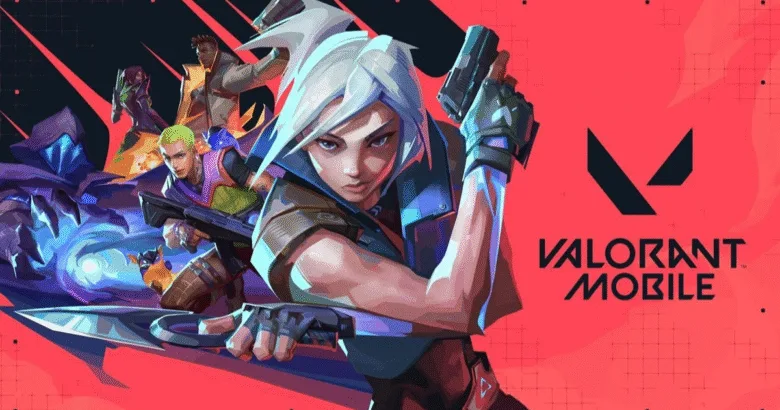This guide gives you the official specs, easy checks, and quick fixes for common errors if you just want to know if your PC can run VALORANT. The following information is based on Riot’s most recent pages.

TL- DR (the 30-second answer)
- Windows 10 (Build 19041+) or Windows 11, 64-bit.
- The CPU has support for SSE 4.2 or AVX.
- 4 GB of RAM (more is better).
- GPU: can use DirectX 11; if you have a dedicated card, make sure it has at least 1 GB of VRAM.
- Only for Windows 11: You need to have UEFI Secure Boot and TPM 2.0 turned on, or else you’ll get VAN9001/9003/9090 errors.
Heads up: Windows 7, 8, and 8.1 are no longer supported as of March 2023. To play, you need to upgrade to Windows 10 or 11.
The official specs (by target FPS)
Riot splits specs into three levels. If you’re close to a tier, you can usually get that FPS by lowering the settings a little bit.
Minimum (≈30 FPS)
- CPU: Intel i3-540 or AMD Athlon 200GE
- GPU: Intel HD 4000 or AMD Radeon R5 220
- RAM: 4 GB
- OS: Windows 10 (Build 19041+) or Windows 11, 64-bit
- Notes: Requires SSE 4.2/AVX; DX11 support; 1 GB VRAM if using a discrete GPU.
Recommended (≈60 FPS)
- CPU: Intel i3-4150 or AMD Ryzen 3 1200
- GPU: NVIDIA GeForce GT 730 or AMD Radeon R7 240
- RAM: 4 GB
- OS/Notes: Same as above.
High-End (≈144+ FPS)
- CPU: Intel i5-9400F 2.90 GHz or AMD Ryzen 5 2600X
- GPU: NVIDIA GTX 1050 Ti or AMD Radeon R7 370 or Intel Arc A310
- RAM: 4 GB
- OS/Notes: Same as above.
These numbers are Riot’s official advice, but your actual FPS will depend on your resolution, map, and settings. The 60-FPS tier is a good starting point for a 1080p esports setup. For high-refresh monitors (144–240 Hz), aim for the high-end tier and use competitive settings.
Do a 60-second self-check (no third-party tools)
- Windows version
- Press Win + I → System → About (Windows 10) or Settings → System → About (Windows 11).
- Confirm Windows 10 Build 19041+ or Windows 11 (64-bit).
- Press Win + I → System → About (Windows 10) or Settings → System → About (Windows 11).
- CPU / RAM
- Press Ctrl + Shift + Esc → Performance tab to see your processor and memory. Compare with the tiers above.
- Press Ctrl + Shift + Esc → Performance tab to see your processor and memory. Compare with the tiers above.
- DirectX & GPU
- Windows 11 security (fixes VAN errors)
- Secure Boot & TPM 2.0 must be enabled for Vanguard to trust your system. Riot’s support page shows how to verify with msinfo32 and tpm.msc.
Read more : Valorant Champions Tour Paris 2025: Venue Details Every Fan Must Know
Common startup errors (and quick fixes)
- VAN9001 / VAN9003: In Windows 11, these usually mean that Secure Boot or TPM 2.0 is turned off. Check the steps for support to make sure they are enabled in UEFI/BIOS. If you don’t feel comfortable changing firmware settings, get in touch with the company that made your PC or motherboard.
- VAN9090: TPM failed to initialize. Use TPM.MSC and the “Prepare the TPM” option; update your BIOS if needed.
Note: Riot also states VALORANT does not support cloud gaming or virtual machines. If you’re trying to play in a VM, that’s why it won’t launch.
What the requirements actually mean (in plain English)
- CPU with SSE 4.2/AVX: VALORANT needs these instruction sets to work with modern CPUs. If your processor is from the last ten years, you should be fine. But very old chips might not pass this test.
- DirectX 11 GPU: Any recent integrated or entry-level dedicated card should work. Update the GPU drivers first on older computers. This fixes a lot of crashes and “D3D11 required” pop-ups.
- RAM (4 GB minimum): The game is light by modern standards, but having 8 GB+ helps if you keep Discord, browsers, and screen recorders open.
- Storage space: Riot doesn’t lock a single number because it changes with patches. Community measurements in 2025 typically land around ~45–57 GB installed—keep ~60 GB free so updates don’t fail. (Unofficial but current.)
- Windows 11 security: Vanguard requires a trusted boot chain. Enabling UEFI Secure Boot and TPM 2.0 proves your system hasn’t been tampered with at startup—hence the VAN errors if they’re off.
Tuning for the FPS you want
If you’re hovering just below your goal (say 120 FPS instead of 144), try these three, high-impact tweaks:
- Lower 3D resolution or render scale a notch, not the whole preset. You’ll gain frames with minimal clarity loss.
- Turn off anti-aliasing or set it to MSAA 2x, and reduce anisotropic filtering to 4x. These are big hitters on low-end cards.
- Cap your FPS just below your monitor’s refresh (e.g., 141 for 144 Hz) to reduce frame-time spikes and input stutter.
VALORANT runs well on even low-end systems with integrated graphics cards (iGPU). The spec tiers above are very similar to 1080p play. If you’re below the target, lower the resolution; if you have room, raise it.
Final word
The recommended tier (60 FPS) is the best for most players, and you can get even more performance by changing a few settings. People who play competitively on 144–240 Hz panels should get the best CPU and GPU they can afford and keep Windows as clean as possible (by removing startup apps and updating drivers). If you have a DX11-capable GPU, 4 GB of RAM, an SSE 4.2/AVX CPU, and the right version of Windows, you’re ready to plant the spike.
Sources
Riot: Official specs page (Windows versions, CPU/GPU tiers, RAM, SSE/AVX). Valorant
Riot Support: Specs & DX11, VRAM note (and page timestamp). VALORANT Support
Riot Support: VAN9001/9003/9090 on Windows 11 (TPM 2.0 & Secure Boot required). VALORANT Support
PCGamesN: End of support for Windows 7/8/8.1 on Mar 14, 2023. PCGamesN
Storage estimates (2025 checks): community measurements ~49–55 GB; keep ~60 GB free.
FAQs
Does VALORANT run on Windows 7/8/8.1?
No. Support ended on March 14, 2023. You’ll need Windows 10 or 11.
Is macOS or Linux supported?
No native support. Vanguard’s security model blocks typical workarounds (VMs, Proton/Wine, cloud VMs), so VALORANT is officially Windows-only.
What build of Windows 10 do I need?
Build 19041+ (version 2004) or newer.
How much space should I keep free?
Keep at least 60 GB free to comfortably install and update. Actual size fluctuates with patches.


